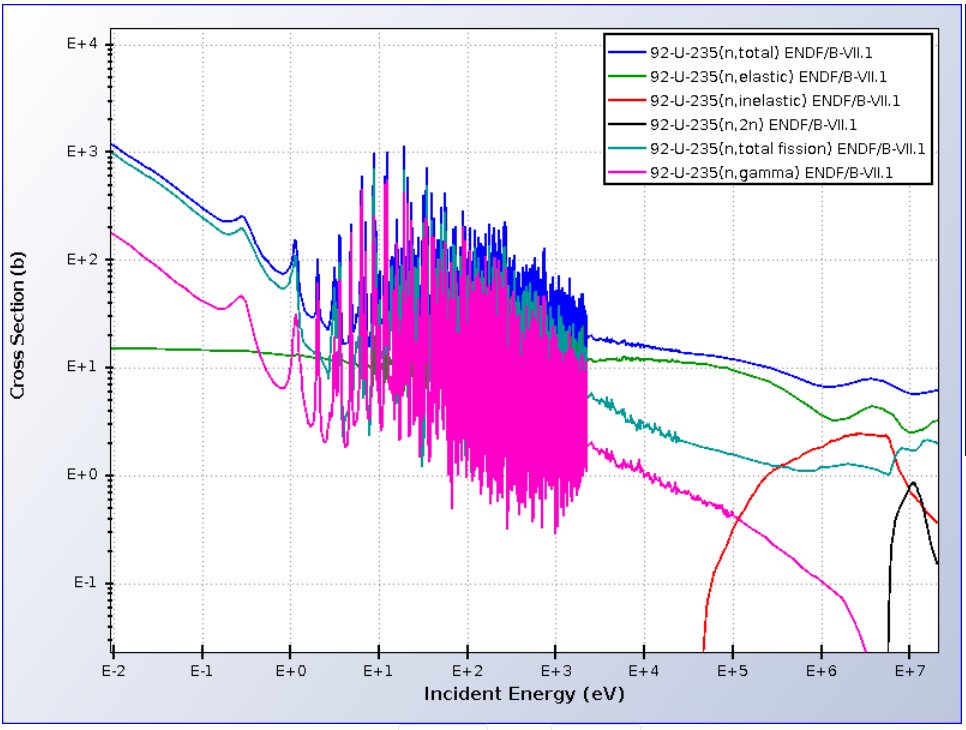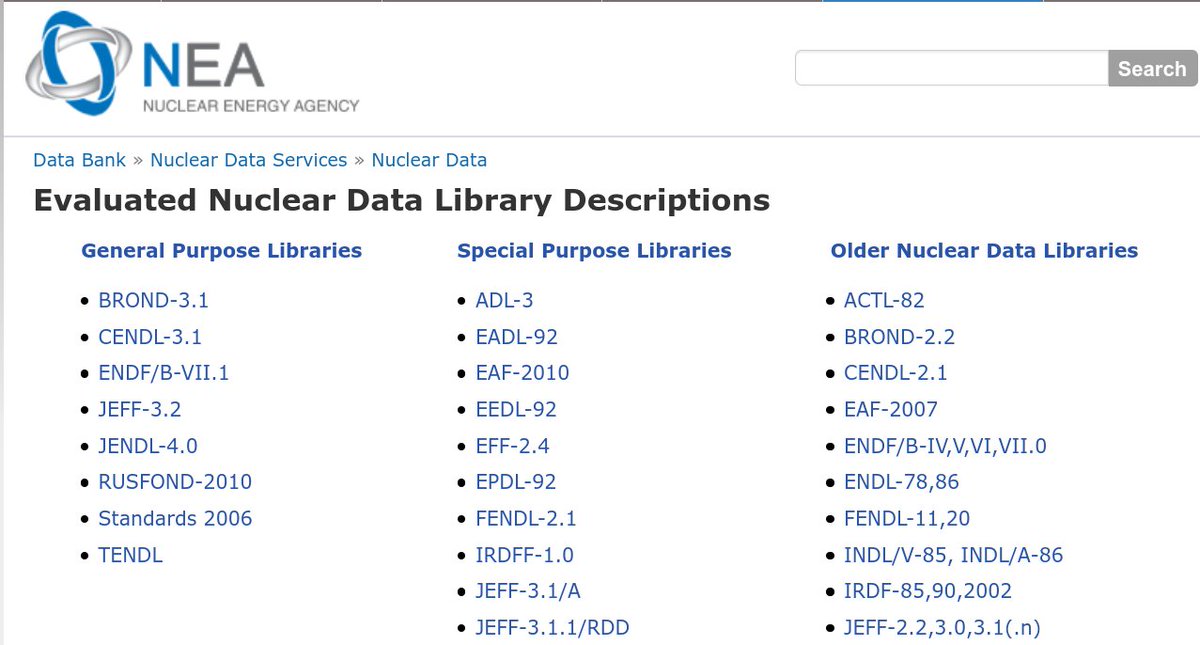What are nuclear cross sections? (thread) You& #39;ll hear nuclear engineers and physicists talk about these to explain nuanced reactor behaviors. They show how likely each possible nuclear reaction is (y-axis) given an incoming particle (like a neutron) at a certain speed (x-axis).
For example, on the left of the plot above, we can see that slow neutrons will likely cause a fission reaction when they interact with Uranium-235. About 1 out of 10 times, however, a (n,gamma) capture reaction will occur instead. Much less likely is the scatter reaction.
When faster neutrons come along, the behavior is more complicated as there are a ton of *resonances* which are the spikes. A tiny change in the incoming neutron energy can change the reaction probabilities by 1000x!
As neutrons get faster (moving right on the plot) the resonances get so close together that we can no longer distinguish between them and just have these averages. Here you can see that neutron scatter is the most likely reaction, followed by fission, then capture.
When fast neutrons hit Uranium-235, we see that inelastic scatter reactions and (n,2n) start occurring as well!
These curves are determined by a beautiful symbiosis of physical measurements and theoretical models (that fill in the gaps). Facilities like LANSCE can do the measurements. https://lansce.lanl.gov/ .">https://lansce.lanl.gov/">... Volunteer groups called *evaluators* do the rest.
Evaluators look at the measurements, run nuclear and statistical models, compare with integral experiments, and select recommended central values. They run codes like EMPIRE ( https://www-nds.iaea.org/empire/index.html)">https://www-nds.iaea.org/empire/in... and SAMMY ( https://www.ornl.gov/division/rnsd/projects/sammy-nuclear-cross-section-evaluation-tool)">https://www.ornl.gov/division/...
One such group, the CSEWG, is responsible for publishing nuclear data files known as ENDF/B. These are most commonly used in the US. ( https://www.nndc.bnl.gov/csewg/ ).">https://www.nndc.bnl.gov/csewg/&qu... There are other similar orgs that publish similar files (see more at https://www.oecd-nea.org/dbdata/data/nds_eval_libs.htm)">https://www.oecd-nea.org/dbdata/da...
Nuclear cross sections are the hand-off between nuclear physicists (who ask what happens in nature) and nuclear engineers (who ask what we can do with it in service to humanity). These values get loaded into computer programs that simulate possible reactor designs.
So when you see someone saying that a reactor that they have dreamed up behaves a certain way, you can be sure that they& #39;re using nuclear cross sections as the basis of these claims. So here& #39;s celebrating nuclear data evaluators! We couldn& #39;t innovate without you!
Oh btw you can browse and plot cross sections yourself at the NNDC ( https://www.nndc.bnl.gov/sigma/index.jsp?as=235&lib=endfb7.1&nsub=10)">https://www.nndc.bnl.gov/sigma/ind... or (fancier) with JANIS ( https://www.oecd-nea.org/janis/ )">https://www.oecd-nea.org/janis/&qu...

 Read on Twitter
Read on Twitter



